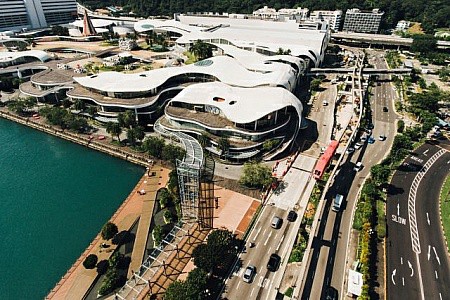[留学生毕业后在澳大利亚找工作难不难]澳大利亚联邦教育部近日公布的最新数据显示,2017年澳洲海外留学生招收人数再度刷新纪录,总人数达80万,中国留学生比例高达38%,比2016年增长了18.1%。2017年中国成为澳大利亚第三...+阅读
阅读提示:泰尔斯瑞公司是澳大利亚的合资股分/私有制电信公司,在市话服务、移动电话服务和国内用户(包括拨号上网和宽带有线拨号上网、卫星和ADSL服务)上保持着统治的位置。尽管盈利能力有所下降,泰尔斯瑞公司仍旧为一个有获利能力的电信公司。澳大利亚联邦政府已经宣布将在2006年卖出其持有的余下的股份。
Telstra Corporation ASX: TLS NZX: TLS NYSE: TLS is an Australian telemunications pany under joint public/private ownership, holding a dominant position in landline telephone services, large share of mobile phone services, domestic consumer (including dial-up access and "broadband" cable modem, satellite and ADSL services under the BigPond and Hypermax brands) and business data services, and cable television. Despite some setbacks, Telstra remains a profitable telemunications pany. The Australian Federal Government has recently announced it expects to sell its remaining share in 2006. A Senate vote passed on the night of September 14, 2005 has allowed this to occur.
History
Telemunications services were originally controlled by the (government-owned) Postmaster General's Department (PMG). On July 1, 1975, separate missions were established by statute to replace the PMG. Responsibility for postal services was transferred to the Australian Postal mission (Australia Post). The Australian Telemunications mission (ATC), trading as Tele Australia, ran domestic telemunication services.
In 1989 the ATC was reconstituted as the Australian Telemunications Corporation.
In 1992 the Overseas Telemunications mission, a separate government body established in 1946, was merged with the Australian Telemunications Corporation into the short-lived Australian and Overseas Telemunications Corporation (AOTC) which continued trading under the established identities of Tele and OTC.
The AOTC was renamed to Telstra Corporation Limited in 1993. It has since been partially privatised but as of mid-2005 remains majority government-owned. A depressed share price is expected to delay the government selling its remaining 51.8% of the pany for some time. Telstra began to establish its new identity and to disengage from its previous trading identities.
Telstra has faced petition since the late 1980s from Optus and a host of other smaller providers. It retains ownership of the fixed-line telephone work, as well as one of two peting pay-tv and data cable works. Other panies offering fixed-line services must therefore deal with Telstra. peting telemunication panies he constantly accused Telstra of overcharging for wholesale access to their works (notably for ADSL, allegedly to protect their cable-modem broadband product); the ACCC has often agreed but decisions by the regulator are very slow.
Privatisation
Telstra was partially privatised by the coalition government in the late 1990s, but it is still 51.8% owned by the government, which would like to divest the remaining portion but this had been blocked until the 14th of September, 2005, both by a hostile Senate, and because of financial and electoral considerations.
Earlier partial floats attracted a great deal of public interest but he, in many cases, been spectacularly poor investments, a majority of which was caused by global sentiment about telemunications panies first inflating, and then just as quickly deflating the share price. There seems no immediate prospect of the share price climbing back to the level at which the earlier shares were originally sold.
The Australian Labor Party (ALP) has consistently opposed full privatisation and continues to do so. Their official party platform also notes a desire for the wholesale and retail arms of Telstra to be more "clearly distinct" within the pany to enable fairer petition with private telemunications providers who use Telstra's lines. In the past, Labor Party figures (including Lindsay Tanner) floated the idea of a breakup of the pany into separate retail and wholesale businesses, though this proposal was dropped after opposition from trade unions. The Australian Greens, the Australian Democrats and key independent Senators Meg Lees and Len Harris held similar positions to the ALP, which meant that until the 2004 elections any bill for full privatisation was guaranteed to fail in the Senate.
Since the Coalition gained control of the Senate, it passed the privatisation legislation with a majority of 37-35. In many rural areas, the ailability of mobile phone services and broadband inter services, as well as general service quality, remain topics of contention for many rural customers. Additionally, rural voters feel that a privatised Telstra will neglect its much less profitable rural works, placing

further pressure on the National Party not to support the sale. Ultimately, the National Party supported the sale, drawing criticism from state Farmers Federations, but not the National Farmers Federation.
On 14th September 2005, the Australian senate concluded that the sale of Telstra would be legalised, with mass media dispute over the effects. The decision coincided with Mark Latham's press release stating bitter remarks about Australian politics, overshadowing the sale of Telstra. In the senate, Senator Barnaby Joyce drew criticism for reneging on his campaign promise to oppose the sale of Telstra.
OwnershipAustralian government: 51.8%
Services
Fixed Line Services
Telstra owns and operates all copper line based PSTN services in Australia. The only peting fixed line service is the Optus work which uses HFC to deliver telephony services to a rather limited percentage of the population. Most of Telstra's profit is generated from fixed line services. Telstra recently issued a profit warning to due declined growth in the fixed line market. People seem to be shifting from their fixed line services to mobile carriers.
Telstra outsources a significant portion of work installation and maintenance to private contractors and businesses, such as ABB munications and STCJV. As such, customers now frequently he to deal with third-parties when arranging the installation of a new phone line or a maintenance service call for a faulty line.
Mobile Telephony (Telstra Mobile)
Telstra operates GSM, CDMA and 3G mobile telephony works throughout Australia. Telstra also provide Prepaid Mobile services, via Telstra Prepaid Plus, utilising all Mobile telephony works that Telstra operates.
In late 2005, Telstra announced that it will replace all three works with a new WCDMA work. [7]
Inter (Telstra BigPond)
Broadband
Telstra, through its retail Inter Service Provider, BigPond, sells broadband inter access via ADSL, HFC cable, satellite, and wireless access through its EV-DO work.
Dial Up
Telstra, through its retail Inter Service Provider, BigPond sell dialup inter access.
Subion Television
As well as owning 50% of the Australian Subion Television provider Foxtel, Telstra's Hybrid Fibre Coax (HFC) Cable work is one of the delivery systems used by Foxtel. Telstra also resell Foxtel's "Digital" products in Foxtel's service area and Austar's "Digital" product, in Austar's service area.
Telstra's ownership of Foxtel has in the past e under fire from the Australian Labor Party (ALP)
Sensis are also responsible for all of Telstra's telephony directory assistance, from basic (1223, 12455) to premium (1234) and emergency (000) services.
In September 2005, Sensis proactively made 235 staff redundant in an attempt to forestall a possible directive from Telstra to dismiss a larger number.
Market Position & Power
Telstra's market dominance extends beyond its historical PSTN voice and private data business, into newer markets such as Inter Access, Hosting, and Colocation services. In spite of petition from both foreign and domestic challengers, the former PTT has retained a strong grip on many of the country's most profitable customers.
Optus remains the panies' closest rival for lucrative business works. However, Telstra supplies almost twice as many customers in the ASX200 with Dedicated Inter Access services.
International expansion
Telstra has attempted to expand into international markets. More notable is a joint venture with Hong Kong entrepreneur Richard Li and his pany Pacific Century Cyberworks during the late 1990s telemunications boom. Their undersea cable venture, Reach, has struggled, with its book value downgraded to zero by the pany in February 2003 (it continues to operate, though, and the pany believes that it may still be viable in the longer term).
In 2002, Telstra also acquired PCCW's remaining 40% stake in Regional Wireless pany (RWC), giving it total ownership of CSL, then the most prominent of Hong Kong's six mobile operators.
Telstra also fully owns New Zealand subsidiary TelstraClear. The pany was formed in 2001 from the merger of subsidiary TelstraSaturn (a 50/50 joint-venture with Austar which had previously acquired ISPs paradise. and Link) and the telco Clear munications purchased from BT Group plc. TelstraClear also operates a Cable TV brand Saturn.
Sponsorship
For marketing reasons, two national sporting arenas bear the name Telstra. They are the Telstra Dome in Melbourne and Telstra Stadium in Sydney.
以下为关联文档:
澳大利亚大学一般什么时间放假据一项“本科生与其家长对假期安排”的调查显示,69.5%的家长更愿意让孩子在国外参加实践,37.8%的家长愿意让孩子回家与亲戚团聚;60.9%的学生愿意参加实践活动,65.3%的学生更倾向...

澳大利亚留学生被吐槽英语差拖后腿留学生的英语差已经不止一次被吐槽过了,澳洲大学内有五分之一的学生是国际留学生,虽然入学之前有经过雅思考试,托福考试的筛选,但是在实际的应用上还是会有一些问题,比如口头交流...

高风险情况下免语言申请到澳洲西澳大学移民专业Y同学背景信息毕业/就读院校:悉尼大学就读专业:媒体实践GPA成绩:75语言成绩:免语言录取院校:西澳大学录取专业:社会工作硕士学生优势:1. 本科学术成绩好,专业是人力资源,跟...

澳大利亚新法令生效有家暴记录者将被禁止入境日前,澳大利亚实施新法,禁止有家暴记录的访客入境,已入境的访客将被驱逐。政府的这一决定得到了主流舆论支持,但也有批评声音称,这一法律措施可能被滥用而成为排外政策的工具。3...

交了高昂美国留学中介费后,她选择去澳大利亚!唐同学曾经一直梦想去美国留学,在交了一大笔中介费后,考虑到美国压力大、花费高、安全也是个问题,逐渐动摇了去美国留学的想法。对比之下,澳大利亚更安全一些,硕士毕业后还有2年...

澳大利亚留学,优秀的寄宿中学推荐中学生留学澳大利亚,生活方面家长最担心的问题莫过于孩子的安全以及能否处理好并适应新的寄宿家庭!事实上,澳洲中学的住宿情况除了教育局或学校指定寄宿家庭外,还有部分学校为寄...

澳大利亚本科留学,国内高中生该如何规划准备呢如今的中国与世界各国的联系越来越紧密,跨国公司、海外购、出境游等等。拥有海外学历和流利的英语能力就是给自己镀了一层金。许多学生和家长选择澳大利亚本科留学,那么如何规...

澳大利亚与加拿大相此,哪个国家更适宜居住澳大利亚和加拿大都是地广人稀的国家,其中加拿大陆地面积约998万平方公里,人口3700万左右;澳大利亚陆地面积约769.2万平方公里,人口只有2500万左右。这两个国家都是世界上最受欢...

澳大利亚生活每月要花多少钱在澳大利亚生活,每个月到底要花多少钱?物价如何?生活成本高不高?我们来看下Numbeo公布的最新数据(2017年7月)。留学益网分别从吃穿住行方面为同学们解读。关于NumbeoNumbeo是世...




